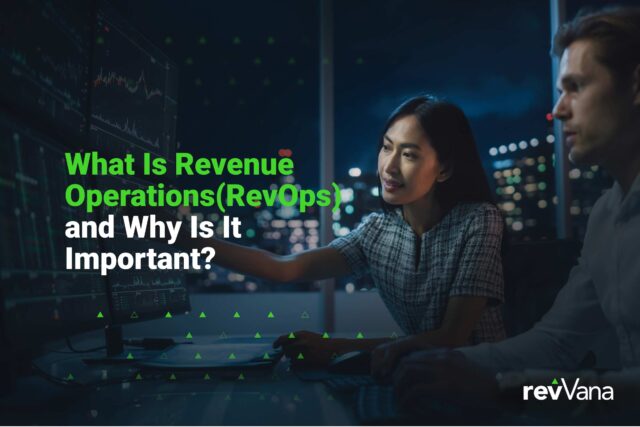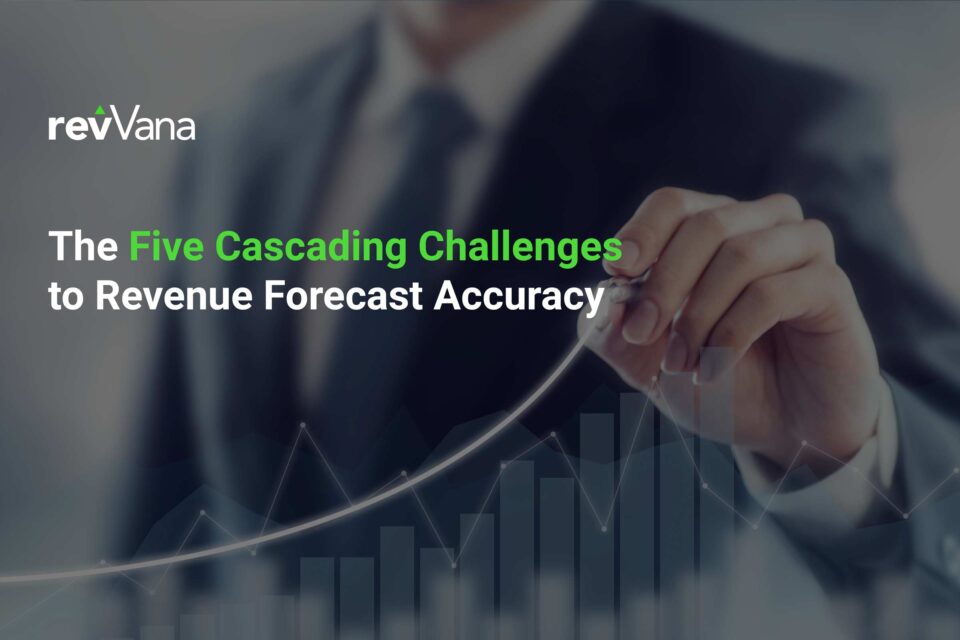

What Is Revenue Operations (RevOps) and Why Is It Important?
Learn about Revenue Operations (RevOps) as a strategy to align siloed revenue teams within B2B and B2C companies and unify revenue goals and targets.

Published on Wednesday, June 1, 2022
Each week revVana speaks to enterprises in a number of industries about how to increase their revenue and operational forecasting accuracy. Recently, a few common themes began to recur. This blog post covers one of these that we call “The Five Cascading Challenges”. It specifically applies to organizations with revenue streams that are tied to consumption or usage of their product.
“Usage-Based Pricing” is a highly common business practice. Organizations contract with each other to supply a product or service offering over a period of time, yet only pay for it as they use or consume it. In Manufacturing, this could be as parts or components are purchased, with software / SaaS, it could be as the product is used or as the API is consumed.
As organizations continue to get more focused on predicting revenue in future quarters, they are equally focused on predicting operational metrics to deliver on the revenue. This would include things like human capacity (time), number of parts units required, demand planning, and so on. The greater the accuracy of this foresight, the greater the optimization of resources. More and more, companies are also looking to factor in the demand that is in their sales pipeline for greater visibility.
As companies look to increase the accuracy of their forecasts, they need to successfully navigate five cascading challenges, each impacting the one that follows. These challenges are not insurmountable with the right discipline, focus and technology support. This article focuses on explaining the challenges with ideas on how to approach solving them. If you’re interested in learning how revVana can help you resolve these, then we recommend reading this article.
There isn’t a sales leader that doesn’t lose sleep over this one. In today’s highly dynamic environment, very little seems predictable. However, as sure as the sun will rise, the company will sign business in the quarter and future revenue will result from this. Products like Salesforce Revenue Intelligence provide sales leaders tools to accurately track deal cycles, identifying where help is needed and what deals are at risk. Increasingly accurate sales booking forecasts will have an accretive effect on revenue forecasts but this is not the only driver.

With consumption-based business models, companies contract for a product or service over a period of time based on an agreed rate. As a result, it is hard to determine the actual revenue that it will ultimately produce until it is consumed. Typically, the estimated amount of revenue is called the “contract value” and is expressed annually (“ACV”). With usage-based pricing models the total value isn’t necessarily contracted, just the rate is. The true contracted value will not be known until the revenue is fully realized.

Picking up from the above, revenue realization becomes a difficult discipline because of the number of factors that could slow it down. With complex offerings, like a make-to-order part or a sophisticated API feed, there is a period of time needed to get the customer started. This is often a “black hole” for many organizations and is possibly the biggest impact to a missed revenue forecast. Often, this challenge is called “Ramp Latency” for the time that is taken before usage of the offering can start to ramp up. Incorporating the forecast of the ramp latency will improve revenue and operational forecasting, closely monitoring the project milestones associated with the implementation or activation of the offering will help.

Once consumption or usage starts, the “Ramp-Up” period can be highly variable. When it comes to embracing new offerings in any given enterprise, there is usually a phased approach, either by department or by production line (in the case of a make-to-order part.) In these cases, there is often a plan to ramp up, but this knowledge is often localized to those closest to the customer and not being shared with finance. Finance could model the expected ramp-up period but is often surprised when that plan deviates.

In terms of modeling the ramp-up period of consumption, most companies can see patterns in how their customers gradually increase their usage. They are able to categorize them into some broad categories (usually 5-7) that reflect a “curve” of increased usage. Some may ramp to 100% of expected usage very quickly, some may be incremental over the period of 6 months and. for others “oscillating curves” might be the best way to explain it. Leveraging a % ramp per month over time for each category of clients will help increase realization of revenue and hence more accurate forecasting of it. Allowing those closest to the customer adjust that plan as they see changes will further increase accuracy.
Once a customer is “fully ramped” and realizing its full value of the contract, things get a bit easier but you are by no means “out of the woods” yet. Most customers have seasonality patterns which are fairly easy to predict and model. What is not as predictable is unforeseen events like acquisitions, divestitures, supply chain issues and other global medical concerns that no one wants to talk about any more. For this challenge, the key is to have seasonally adjusted patterns for each customer or category of customers and provide the field with an early warning system to alert adverse changes (acquisitions, divestitures, supply chain issues) that will impact the revenue forecast.

Revenue and operational forecasting is like the “art of deconstruction”, solving big problems by breaking them down into smaller problems. By tackling these Five Cascading Challenges, your revenue forecasts will be more accurate and you will also be able to provide greater clarity in regard to the operating requirements as a result.